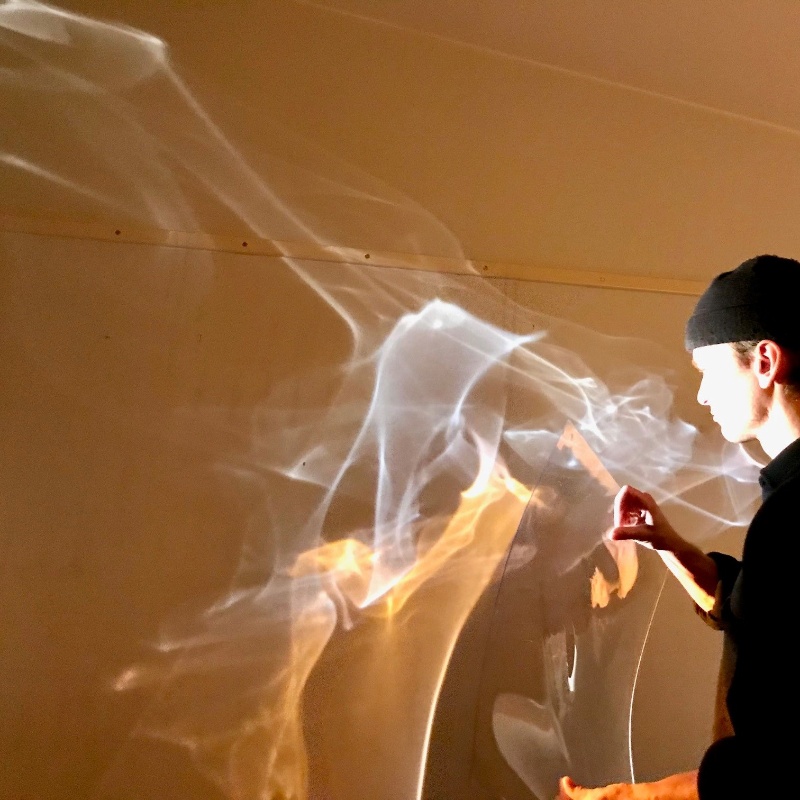Content’s structure:
Daylight and artificial lighting
(Concept, terminology, definitions)
Human Perception
(Visual, non visual, psychological)
Design Basics
(Observation, synthesis, process and tools)
Lighting machine
(Mock-up, design-process)

The dynamic relationship between lighting and the built environment is shaped through their mutual impact on the human experience.
In the first course of the Architectural Lighting Design Master’s program, "Light and Humans," you will explore this essential connection, discovering how light influences our perception, behaviour, and well-being. This course offers an exciting journey from understanding light as a technological, social, and perceptual phenomenon to applying this knowledge in hands-on, real-world scenarios. You will also have the chance to challenge your own perception via the laboratory experiments.
Through immersive, full-scale lighting applications, you will not only learn but experience the transformative power of light in shaping spaces and lives. This is the first step into the world of architectural lighting design, where you will engage with light as a creative, powerful tool to enhance human environments.
Apart from the Lighting Design Division teachers and tutors, you will meet as part of your educational journey some of the regular guests that take part on this course like the lighting design practitioners Jan Ejhed, Colin Ball and Yael Erel.
#Perception, lighting basics, full-scale application
KTH Campus
Autumn 2025: P1 (9 hp)
67%
50199
Normal Daytime
English
Min: 5
Please note: all information from the Course syllabus is available on this page in an accessible format.
Course syllabus HS2007 (Autumn 2019–)Content’s structure:
Daylight and artificial lighting
(Concept, terminology, definitions)
Human Perception
(Visual, non visual, psychological)
Design Basics
(Observation, synthesis, process and tools)
Lighting machine
(Mock-up, design-process)
Students should gain a basic light and lighting vocabulary.
Students will learn and discuss the importance of light and lighting for human beings' cultural, historical and social development.
Students should be able to solve a lighting design task using light and materials as shaping elements of the physical environment and reflect over their communicative possibilities.
Students must work on the solution of design tasks establishing connections between conceptual ideas and real life situations.
Students should be able to justify design choices in terms of the relation between light sources, materials and human experience and the relevant conditions of the site.
The eligibility as required for the programme, or the equivalent knowledge in Architecture or related field.
DiLaura, Houser, Mistrick, Steffy.(2011) Lighting Handbook, 10th ed, IESNA.
Corrodi, Spechtenhauser. (2008) Illuminating.
Ines, Malcolm (2012) Lighting for Interior Design
Mende,Kaoru (2010) Designing with shadow.
Millet, Marietta. (1996) Light revealing architecture.
Pettersson, Svante. (2015) See the light.
Plus recommended and mandatory literature presented during the course.
Speirs, J. and Major, M. (2006). Made of Light - The art of light and architecture.
Tanizaki, Yunichiro. (1977) In praise of Shadows
Tregenza, P. & Loe, D. (2013). The design of lighting, Routledge.
Zajonc, A. (1995). Catching the Light: The Entwined History of Light and Mind.
Plus recommended and mandatory literature presented during the course.
Based on recommendation from KTH’s coordinator for disabilities, the examiner will decide how to adapt an examination for students with documented disability.
The examiner may apply another examination format when re-examining individual students.
If the course is discontinued, students may request to be examined during the following two academic years.
The course has three examination modules, a workbook (INLA), design basics (PROA) and design project (PROB).
The course evaluation is a combination of analysis, process and results of project 1 and 2 (reinterpretation task and desing task) and workbook grades, which reflect teamwork and individual achievements.
Examination of PROA “reinterpretation task” takes into consideration: Analysis, Findings, Process, Tools, End result.
Examination of PROB “design project” takes into consideration: Vision and Concept, Process, End result, Presentation.
Personal learning process is assessed through INLA “workbook”. Examination takes into consideration the following criteria: Completeness, Structure, Depth of reflections, Critical thinking and Research.
Detailed description of assessment methodology is provided at the beginning of each course.
To receive a final grade for this course, grade E or higher on the workbook (report of lectures, process and reflections) and the project (process and seminars) is required, as well as 80 % attendance.
Overall course grade is based on grading scale A-F.